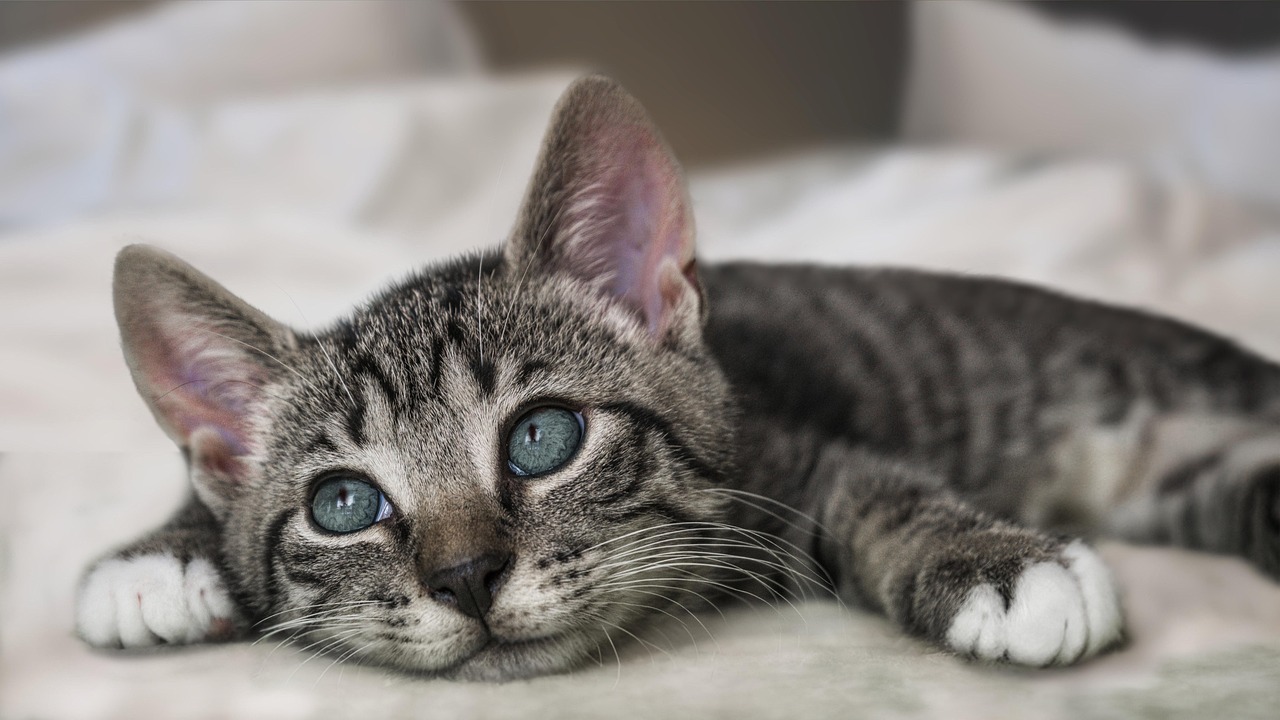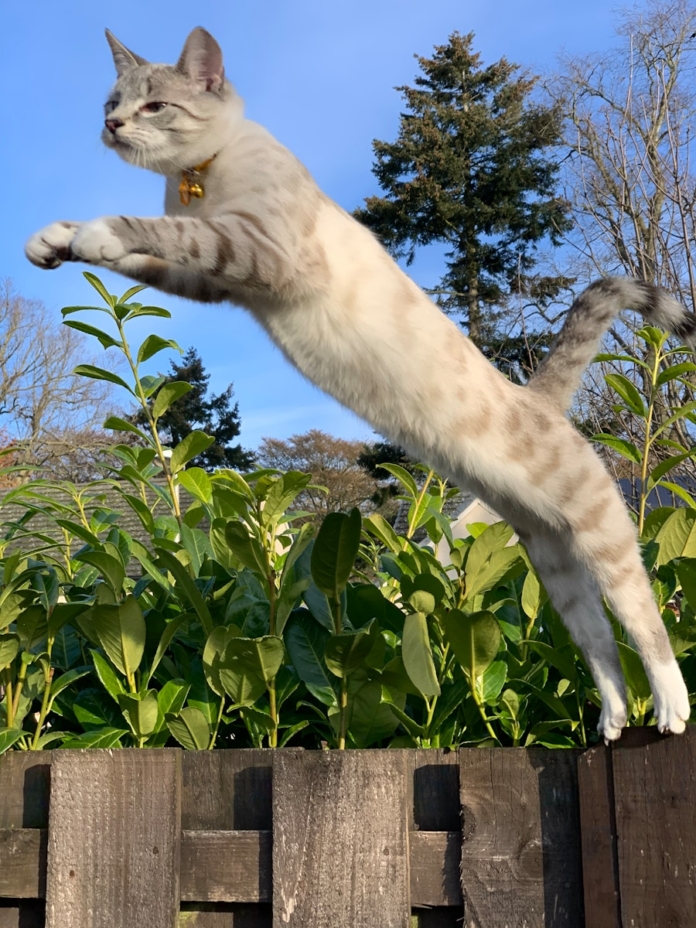Understanding feline instincts
Have you ever wondered what’s going on in your cat’s mind as they prepare to pounce? It’s not just playful behavior—it’s a manifestation of deep-seated feline instincts. Cats, both big and small, have evolved to be expert hunters, and many of their seemingly quirky actions are tied to these primal roots. These instincts help them catch prey in the wild, and although your house cat doesn’t need to hunt for food, these behaviors still play out in your living room.
At the heart of these instincts is survival. Cats are natural predators, and through thousands of years of evolution, they have developed behaviors that enhance their ability to stalk and capture prey effectively. Wig the butt-wiggling action is one of these behaviors, which might appear as a funny dance to onlookers, but it’s actually a finely-tuned preparation step.
- Stealth Mode Activated: When a cat is hunting, stealth is key. The wiggle helps them ground their back legs, similar to anchoring, ensuring they have a powerful push-off during the pounce.
- Muscle Check: It also involves checking muscle readiness. Think of it as a runner flexing their muscles before a race. This small movement helps the cat ensure all systems are go for a successful leap.
- Primal Focus: The wiggle also allows cats to focus intensely on their target—be it a toy or a shadow in your living room—aligning their body for maximum efficiency.
Understanding these instincts not only provides insight into your cat’s behavior but also helps reinforce that our furry friends are much closer to their wild ancestors than we might think. Next time you see your feline pal give that playful wiggle, remember, it’s a snapshot into the life of a hunter.
Observing big cats in the wild
When observing big cats like lions, tigers, or leopards in their natural habitats, their movements become a fascinating display of instinctual precision and power. Among these movements, the butt wiggle before a pounce is both amusing and insightful. Just like house cats, big cats perform this action, demonstrating that it’s deeply ingrained in their behavior, essential for successful hunting.
In the wild, every move counts. Big cats rely on their hunting prowess to survive, and any miscalculation could mean the difference between eating or going hungry. This is why their behaviors, including butt wiggling, are so vital. It prepares them physically and mentally for that crucial moment of action.
- Muscle Engagement: Big cats use their wiggling motion to engage and activate their powerful hind leg muscles, ensuring they’re ready for the explosive energy needed to capture prey.
- Perfect Precision: As apex predators, the exact positioning of their bodies before a jump is crucial. The wiggle helps them adjust their stance and balance, giving them the best possible angle for success.
- Kinetic Check: The moment before a pounce is a brief pause where these majestic creatures check their readiness. The wiggle acts as a reset, focusing their minds and bodies on their target.
As you enjoy watching wildlife documentaries or perhaps a live safari, notice these subtle yet significant movements of big cats. This action, shared with their domesticated cousins, highlights their shared ancestry and the continuing influence of instincts that have been preserved over eons.
“The tiger and the lion may be fiercer, but the cat remains the most enigmatic, and perhaps most perfectly adapted, of them all.” — John Banovich
Exploring expert theories
Delving deeper into the behaviors of cats, it’s intriguing to consider what experts have to say about the mysterious butt wiggle. Although it’s a common behavior, surprisingly little scientific research has explicitly focused on this subject. Yet, animal behaviorists and feline experts offer several compelling theories that could potentially explain why cats engage in this quirky action before pouncing.
One of these theories proposes that the butt wiggle serves as a form of physical and mental preparation. Much like how athletes warm up before a game to get their minds and bodies in sync, cats might wiggle to gear up, ensuring their muscles are primed for action and their focus is razor-sharp on their target. This preparation might be especially vital in the wild, where missing a mark can mean going without a meal.
Another expert theory points towards the possibility of enhanced balance and coordination. By repositioning their body through this back-and-forth movement, cats might be fine-tuning their stance to achieve optimal balance. This increased stability could be essential for a successful pounce, allowing them to precisely calculate the distance and trajectory needed to secure their prey.
Furthermore, some experts speculate that the wiggle might simply be a behavioral expression of excitement or anticipation. For a cat gearing up to leap, the sudden rush of adrenaline might manifest in this energetic display. The wiggle might then serve as an outlet for this excited energy, providing them with the extra momentum needed for their leap.
| Theory | Details |
| Physical Preparation | Warming up muscles and focusing the mind for the leap. |
| Enhanced Balance | Adjusting stance for better stability and precise execution. |
| Excitement | Releasing energetic jitters to aid in pouncing. |
These theories showcase the multifaceted nature of this behavior, suggesting that the butt wiggle might serve several purposes simultaneously. The next time you observe a cat do their charming wiggle, consider which theory seems most plausible based on the situation. Is it a warm-up act or a joyful expression of excitement? The mystery remains open for interpretation, inviting us to explore and perhaps discover even more about this delightful feline phenomenon.
Searching for traction
One possible explanation for a cat’s pre-pounce wiggle involves the surface beneath their paws. When preparing to leap, stability is crucial. This is where the renowned evolutionary biomechanics expert, John Hutchinson, offers an interesting perspective. He suggests that the butt wiggle is more about the cat ensuring surefooted traction than about cuteness or excitement.
Imagine a cat as it crouches, muscles tight and ready. To push off powerfully, it needs to secure a good grip with its back legs. Just like when a runner digs their feet into starting blocks for a race, cats wiggle their hind ends to dig claws into the ground, testing the surface’s grip. This subtle yet pivotal action minimizes the risk of slipping during that precise moment of exertion.
Slippery floors or loose surfaces, such as tiled kitchen floors or sandy paths, present challenges for cats. By performing this habitual wiggle, they increase their chances of a successful jump by ensuring their launch platform is stable. In this way, the wiggle is more than just a preparatory movement; it’s about mechanics and technique, offering our intuitive feline friends the assurance that they can leap with precision and power.
It’s not just house cats that adopt this mechanism. Their wild counterparts—cheetahs, tigers, and snow leopards—display similar behaviors. Whether leaping onto unsuspecting prey or practicing playful pounces, big cats value the added traction to channel their strength efficiently. Observing a cat’s often humorous yet strategic wiggle helps us appreciate their innate athleticism and complex motor skills.
The next time your furry companion readies themselves for a swift leap, consider the thought and care behind their actions. There’s so much more to each wiggle than meets the eye, highlighting the intricate dance between instinct and intelligence in the animal kingdom.
Preparing for the leap
Cats are masters of agility and precision, making their leap a fascinating display of their evolutionary traits. The moment before they pounce is all about preparation. This preparation involves careful calculation and a full-body readiness that ensures they hit their mark. During this stage, every part of a cat’s body comes into play, highlighting their skilled, athletic nature.
Before a cat launches after a toy or target, it lowers its body, aligns itself with keen eyes, and waggles its behind. This movement may appear as a simple wiggle but is actually a series of muscle engagements. Here’s what happens:
- Alignment and Focus: The wiggle acts as a chance for cats to check their alignment and focus on their target. They position their bodies for the most effective angle.
- Energy Charging: Like a spring coiling before release, their muscles charge energy. This kinetic preparation ensures a powerful and precise leap when the time is right.
- Breath Control: Even their breathing adjusts, aligning with their movements for optimal stability and power during the leap.
These movements demonstrate the natural grace and power embedded in every feline, transforming a playful moment into a stunning dance of anticipation and instinct. Watching your cat in this preparatory phase is a glimpse into the intricate skill and flexibility that these animals possess.
For more insights into this charming behavior, check out this article on Cattitude Daily.

